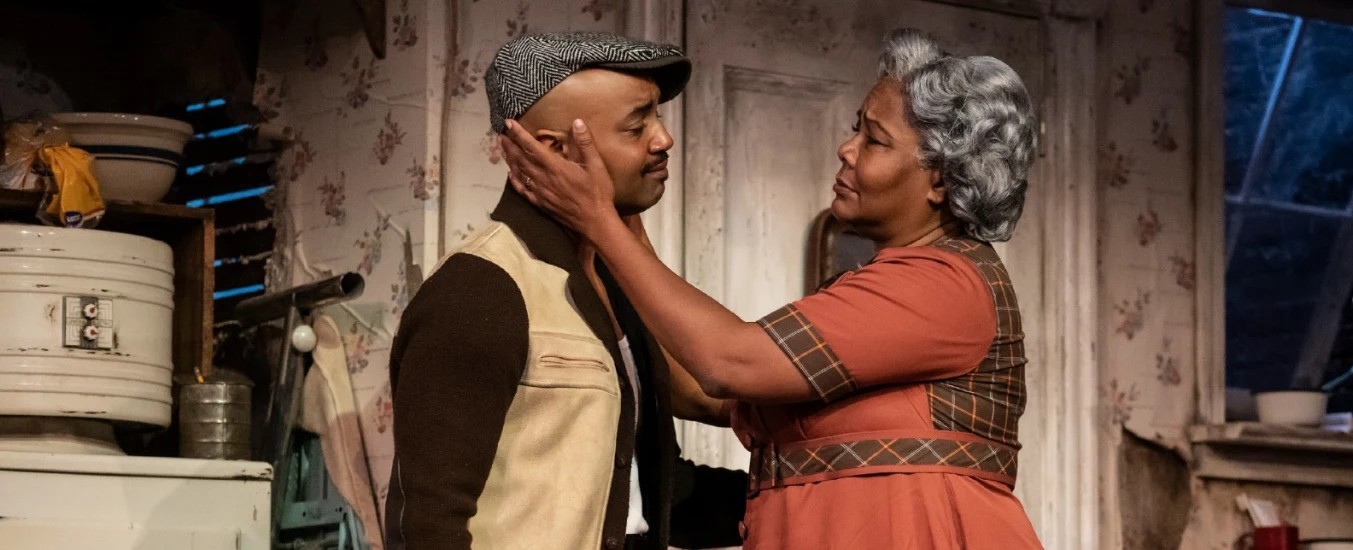'A Raisin in the Sun' review — Tonya Pinkins and Lorraine Hansberry's script are the stars of this resonant revival
A revival of a landmark American play that enables you to appreciate it with fresh eyes and ears counts as a success – but not necessarily an unqualified one. So it goes for director Robert O’Hara’s hit-and-miss vision of Lorraine Hansberry’s A Raisin in the Sun, an enduringly resonant 1959 drama of a Black family in Chicago chasing their dreams and desires.
There are consistently fine performances by the cast, led by the estimable Tonya Pinkins as the ferociously determined, widowed matriarch Lena Younger and Francois Battiste as her precariously impulsive son Walter. The plot spins around their battle over a life insurance policy: Lena intends to use the money for a down payment on a house in the all-white Clybourne Park neighborhood to get her family out of their cramped, run-down apartment.
That includes her headstrong daughter Beneatha (Paige Gilbert) along with Walter and his devoted but weary wife Ruth (Mandi Masden) and their son Travis (Touissaint Battiste alternates with Camden McKinnon). Each member of the ensemble adds notes of distinction, including Jesse Pennigton as Karl Linder, who tells the Youngers they aren’t welcome in Clybourne Park.
Walter, a restless chauffeur, wants the money to invest in a liquor store anyway. He’s furious that his mother stomps on his plans. An unplanned pregnancy and sorely misjudged business scheme add fuel for combustion’s sake.
Though the story remains the same as ever, this show gets bogged down by some directorial decisions. O’Hara conjures up the ghost of Walter Sr., Lena’s late husband, a hardworking family man who’s referred to but doesn’t appear in the play. The specter actually has little impact.
The director also includes the Youngers’ nosy chatterbox neighbor, Mrs. Johnson (Perri Gaffney), a character cut from the drama’s three Broadway runs. She drops bombshell news about violence in Chicago suburbs that adds ominous shadows to an already ambiguous conclusion. O’Hara (Slave Play) isn’t timid about getting downbeat.
The revival does urge you to look and listen intently. It uses both silence and overlapping dialogue to great effect. Family members interrupt each other as they speak, and the show rings truer than ever. An intense moment when Walter speaks directly to the audience and, in effect, implicates them in what they’re watching makes theatregoers sit up and take notice.
On the other hand, a moment in which we hear but don’t see Walter and Ruth talking after sex has an odd, canned quality and thuds. Another misstep comes when ethereal light beams from a hole in the ceiling whenever Lena’s late husband enters the room. The same light shines when Beneatha considers a life far from Chicago. The heavy-handed effect yields diminishing returns.
A Raisin in the Sun leaves room for hope but always ends with uncertainty. We know the Youngers are unwanted in Clybourne Park. Mrs. Johnson infers the threat of danger. The final tableau O’Hara devises to signify the Youngers’ future seeks to be a provocation. It reads as overstatement.
In the end, the true star is Hansberry’s script. Even when imperfectly staged, her takes on racism, assimilation, generational divides, and life’s harsh realities and hard choices remain razor-sharp.
Photo credit: Francois Battiste and Tonya Pinkins in A Raisin in the Sun. (Photo by Joan Marcus)
Originally published on
